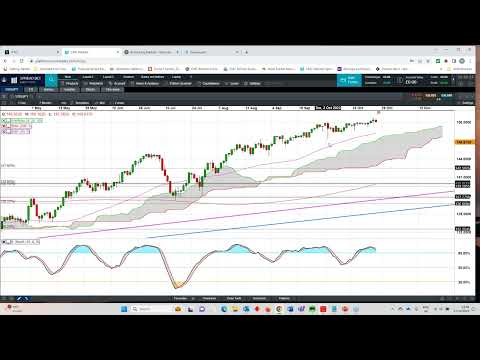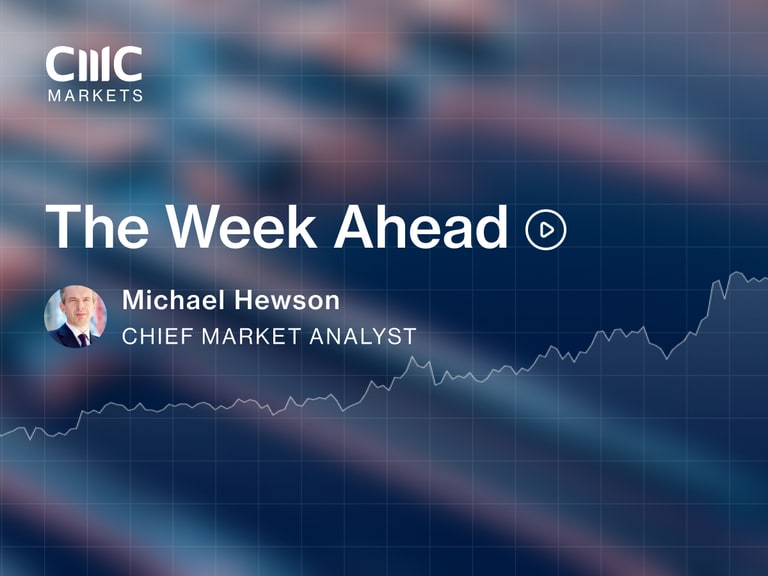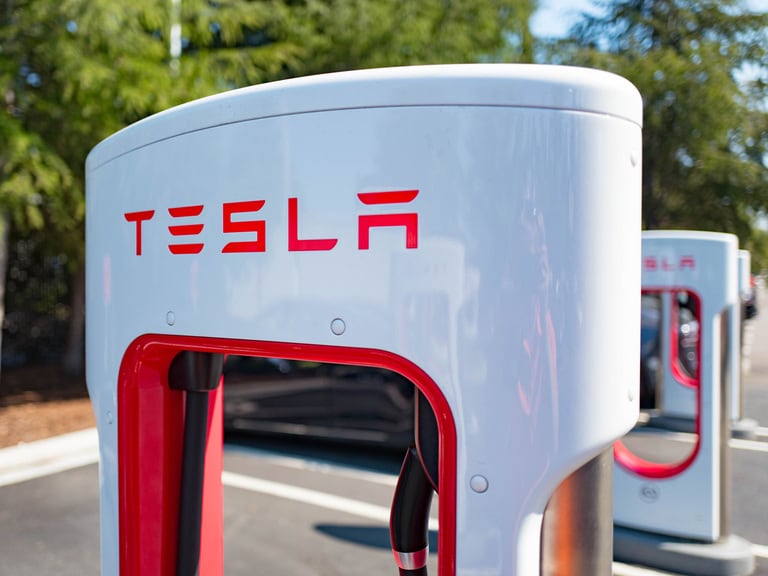Here's our pick of the top three economic and company events in the week commencing Monday 30 October:
US Federal Reserve interest rate decision
Wednesday 1 November: Having left rates unchanged in September, the US Federal Reserve looks set to pause again on Wednesday. With the Fed having guided one more rate hike this year, markets now expect an increase in December. Speaking just before the blackout period prior to the upcoming meeting, Fed chair Jay Powell signalled that a rate hold is likely as the Fed sticks to its “higher for longer” message. Most policymakers appear to think more time is needed to assess the effects of previous rate hikes. The unemployment rate remains stubbornly low and consumption patterns continue to be resilient, with the US economy growing strongly in the three months to September. However, there are concerns that the US could be on the cusp of a sharp slowdown in the final quarter of the year. With mortgage rates at 8%, further rate rises risk destabilising the housing market and increasing the pressure on people who are already struggling with current financial conditions.
Bank of England interest rate decision
Thursday 2 November: On Thursday the Bank of England is expected to keep interest rates on hold for the second consecutive meeting, suggesting that the UK’s central bank may be done when it comes to further rate hikes. Having raised rates 14 times in a row going into its last meeting, the BoE unexpectedly hit pause in September. With the bar to further hikes now high, policymakers have switched to a “higher for longer” narrative similar to that of the Fed. More hawkish voices on the Bank’s nine-member Monetary Policy Committee may believe that higher rates are needed to tame rising consumer prices – Catherine Mann, for one, is likely to push this line. However, she is likely to be in a minority. If, as expected, inflation fell further in October, the prospect of more rate hikes is likely to diminish. Crucially, the energy price cap came down again in October, so on annual comparatives alone there should be a sharp drop in inflation. Sticky wage growth is likely to be a concern for the Bank, but even here there is a sense that the peak may have passed. Average earnings excluding bonuses grew 7.8% in the three months to August, down from a record high of 7.9% in the previous three-month period. So, BoE policymakers ought to have enough evidence to vote to hold rates by some kind of majority, with perhaps one or two of the four hawks who voted for a hike in September continuing to back a rate rise. Among the four hawks, the most likely to switch to a ‘hold’ vote may be external MPC members Megan Greene and Jonathan Haskel.
Shell Q3 results
Thursday 2 November: Although Shell’s share price has slipped back slightly since hitting a record high of 2,801p on 18 October, the shares remain up about 14% year to date. The gains have been spurred by CEO Wael Sarwan, in post since January, who has pushed back against Shell’s clean energy transition. In June Sarwan said, "We need to continue to create profitable business models that can be scaled at pace to truly impact the decarbonisation of the global energy system. We will invest in the models that work – those with the highest returns that play to our strengths". His comments, which caused unease in some parts of the business, were taken by many as a broadside against calls to cut back on fossil fuel use and an acknowledgment that the transition to renewables will be a gradual process. In Q2, Shell’s adjusted profit fell to $5.07bn, missing expectations of $5.61bn mainly because of decreases in the price of both natural gas and crude oil. Since then, gas and crude oil prices have rallied, suggesting that Q3 is likely to be better than Q2. Besides lower commodity prices, the company also blamed weaker trading for the slowdown in Q2. Its chemicals division had a difficult quarter, sliding to a loss of $468m, although this was offset by a $917m profit on the products side. Profit in the integrated gas division fell 34% year-on-year to $2.5bn. Upstream, the drop in profits was even more marked, with a 66% year-on-year decline in adjusted profit to $1.68bn. The renewables division saw profit fall 69% on an annual basis to $228m, highlighting the challenge that the clean energy transition poses for oil majors like Shell. On its outlook, Shell downgraded expectations for capital expenditure by $1bn to between $23bn and $26bn. The company also announced a 15% dividend increase and a $3bn share buyback programme for Q3.
Here's our pick of the rest of the week's major economic and company events:
HSBC Q3 results
Monday 30 October: A week after its UK banking peers reported earnings, it’s now HSBC’s turn to report Q3 results. The bank, which is listed in London but draws most of its profit from Asia, saw its shares pop above 660p – a four-year high – in early August after it reported Q2 and half-year results. Since then, the shares have slipped back to current levels just above 600p on concerns over the resilience of the Chinese economy and the bank’s exposure to China’s struggling property sector. Pre-tax profit in Q2 came in at $8.8bn as revenue increased 36% to $16.7bn, driven by a strong performance in both commercial banking and wealth services. The bank set aside a further $0.5bn to cover potential losses from non-performing loans. In a sign that higher interest rates are influencing loan demand, customer lending decreased by $9bn in Q2, with $6bn of that coming from the UK operation. Customer account balances in Europe also fell by about $13bn, while net interest margin improved to 1.72%. The bank also announced a $2bn share buyback. On guidance HSBC raised its outlook for net interest income to above $35bn.
Bank of Japan interest rate decision
Tuesday 31 October: There’s been a lot of speculation in the past few days as to whether Japan’s central bank might adjust monetary policy from its current settings. Yet even with USD/JPY trading close to the 150.00 area, there has been little sign that the BoJ is considering a change as some measures of core inflation ease. Policymakers might make a modest tweak to the yield curve control policy amid concerns that US rates are dragging yen rates higher, but Japanese officials have given little indication that they are leaning in the direction of a change in policy, despite the yield on 10-year Japanese government bonds being at 0.85%, well above the upper boundary of 0.5%.
Eurozone flash CPI (October)
Tuesday 31 October: Inflation in the euro area has been slowing sharply in recent months, with core CPI slowing to 4.5% in September. That made the ECB’s decision to hike rates in September even more surprising. In October the ECB decided to leave rates unchanged, perhaps mindful that – with economic data in France and Germany looking increasingly awful – further rate hikes might be counterproductive. Headline CPI also slowed sharply in September, falling from 5.3% in August to 4.3%. Expectations are for a further softening in headline inflation.
BP Q3 results
Tuesday 31 October: With sector peer Shell’s share price hitting a record high over the last quarter, BP’s share price has struggled to keep up, although it did manage to get close to the highs of earlier this year. Like Shell, BP also has a new CEO, albeit for different a reason. BP’s previous boss, Bernard Looney, was forced to step down after failing to disclose details of past relationships with colleagues. A few weeks after Looney stepped down, the head of BP’s US operation, Dave Lawler, also resigned. This uncertainty at the top of the UK’s second biggest oil company perhaps helps explain why BP’s share price has underperformed. Meanwhile, the jury remains out as to whether a new CEO will persevere with Looney’s “performing while transforming” mantra. When BP reported in Q2, results were widely expected to come in short of expectations. However, even with the bar lowered, BP still failed to clear it. Revenue in Q2 came in at $48.54bn, while underlying replacement cost profit slid to $2.59bn, missing estimates by almost $1bn. To offset this disappointment BP announced a bigger than expected share buyback worth $1.5bn and raised the dividend by 10% to $7.27 a share. This appears to have come about by increasing net debt by $2bn to $23.7bn, pushing its net gearing up to 21.7%. When it comes to the underlying business, its gas and low-carbon energy business outperformed, with only a modest fall in profits to $2.23bn. Oil production and operations saw profit decline to $2.78bn. However, the decline in the main oil business was more marked with profit sliding by more than half versus the year-ago quarter to $5.9bn. Total tax paid during the quarter came in at $2.1bn. On Q3 guidance, BP said it expected upstream production to be broadly flat compared to Q2, with oil production output set to be lower, and gas and low-carbon energy to be higher.
J Sainsbury half-year results
Thursday 2 November: Since hitting 15-month highs back in May, Sainsbury’s shares have struggled to recover as concerns grow over the resilience of the UK economy. At the same time, supermarket costs are rising and margins remain under pressure amid competition between retailers. We saw a solid set of numbers in Q1, with like-for-like sales excluding fuel rising 9.8%, while grocery sales increased 11%. The one area of decline was in clothing, where sales fell 3.7%. The supermarket reiterated its full-year outlook on underlying profit, which it expects to come in at £640m to £700m. Fuel sales fell 21.4%, though the high base of last year played a part here. Encouragingly, Sainsbury’s said that food inflation is easing and that savings would be passed on to customers. However, the clothing division and Argos operation may continue to show signs of weakness, as highlighted by UBS in a note to clients in September.
Apple Q4 results
Thursday 2 November: Since pushing up to record highs during the summer and briefly achieving a $3tn market cap, Apple shares have slipped back. They are currently trading just above their 200-day simple moving average at around $170. Since its autumn product launch, where Apple announced the release of the new iPhone 15, there have been reports of devices overheating and a slow uptake of the product in China. The Chinese market makes up 20% of Apple’s overall revenue. Apple’s last set of numbers showed a strong rebound in demand from China, which generated revenue of $15.8bn. Can we expect to see a similar return in Q4? Or did the new Huawei device cannibalise Apple’s sales? Time will tell. On the plus side Apple’s push in India could well provide an offset, with CEO Tim Cook saying that performance there had exceeded expectations. Another notable feature of Apple’s Q3 numbers was that demand for iPhones fell in the US and Japan, while inventory levels rose by 49%. This perhaps isn’t so surprising given that September brings the launch of new products and upgrades. Revenue in Q3 came in at $81.8bn, which was higher than expected, although down from last year. iPhone revenue fell to $39.67bn, while revenues for iPads also disappointed, coming in at $5.79bn. Wearables also fell short at $8.28bn. On the plus side, services revenue rose to a new record of $21.21bn, while Mac revenue beat forecasts at $6.84bn, although it was still below the same quarter last year. On its guidance for Q4, Apple said it expects to see further declines in revenue with iPad and Mac revenue expected to see double-digit percentage falls. Revenue in Q4 is expected to have fallen year-on-year to $89.29bn, although profits are expected to have risen to $1.39 a share. On a full-year basis, revenue is expected to have fallen to $383bn, with profit down to $6.07 a share.
Peloton Q1 results
Thursday 2 November: The problems have continued for Peloton as the shares dropped to fresh record lows in September. Losses have shown little sign of slowing, the company incurring a Q4 loss of $0.68 a share. That said, Q4 sales did manage to beat forecasts at $642m. The costs of a seat post recall in May proved to be much higher than predicted, which weighed on profits and looks set to continue to do so. The company also said it doesn’t expect to remain free cashflow positive over the next two quarters. Revenue in Q1 is expected to have slowed to $590.6m, while losses are expected to come in at $0.32 a share. Connected fitness revenue is a key area that the company is struggling to grow. This area is expected to fall from last year’s $204m to $170m, while subscription revenue is expected to remain steady at around $410m.
Palantir Q3 results
Thursday 2 November: Shares of data analytics company Palantir are up 140% year to date, perhaps unsurprisingly given its position as a key military contractor for the US government. That said, the shares are still well off their post-IPO highs in 2021 When the company reported back in August, we saw Q2 revenue increase to $533m, up from $473m a year earlier. Revenue from government agencies rose 15%. For 2023 Palantir raised its guidance, saying it expected to see annual revenue of $2.21bn, with profit rising to $576m. The company says its new AI platform will be at the forefront of its future strategy. Earlier this month the company announced a new $250m contract with the US army to support AI capabilities.
US non-farm payrolls (October)
Friday 3 November: With the Federal Reserve expected to keep rates on hold on 1 November, the US labour market continues to hold up well. In the week to 15 October initial jobless claims fell to 200,000 for the first time since January – a sign that the US economy remains resilient. The US jobs report for September showed that the economy added 336,000 jobs, while the August figure was revised up to 227,000. That contributed to a rise in long-term Treasury yields to 16-year highs. Wage growth was slightly softer than expected at 4.2%. Part-time positions jumped to 151,000, which may help explain why wage growth didn’t race higher. The unemployment rate remained steady at 3.8%. The economy is expected to have added 185,000 payrolls in October.
INDEX DIVIDEND SCHEDULE
Dividend payments from an index's constituent shares can affect your trading account. View this week's index dividend schedule.
SELECTED COMPANY RESULTS
| Monday 30 October | Results |
| Airtel Africa (UK) | Half-year |
| HSBC (UK) | Q3 |
| Loews (US) | Q3 |
| Pinterest (US) | Q3 |
| Tuesday 31 October | Results |
| Advanced Micro Devices (US) | Q3 |
| BP (UK) | Q3 |
| Caterpillar (US) | Q3 |
| Match (US) | Q3 |
| Pfizer (US) | Q3 |
| Wednesday 1 November | Results |
| Airbnb (US) | Q3 |
| Aston Martin Lagonda Global Holdings (UK) | Q3 |
| Avis Budget (US) | Q3 |
| CVS Health (US) | Q3 |
| DoorDash (US) | Q3 |
| Electronic Arts (US) | Q2 |
| Estee Lauder Cos (US) | Q1 |
| Etsy (US) | Q3 |
| GSK (UK) | Q3 |
| Kraft Heinz (US) | Q3 |
| MetLife (US) | Q3 |
| Mondelez International (US) | Q3 |
| Qualcomm (US) | Q4 |
| Roku (US) | Q3 |
| Wingstop (US) | Q3 |
| Yum! Brands (US) | Q3 |
| Thursday 2 November | Results |
| Apple (US) | Q4 |
| BT Group (UK) | Half-year |
| ConocoPhillips (US) | Q3 |
| Dropbox (US) | Q3 |
| Duke Energy (US) | Q3 |
| Dynatrace (US) | Q2 |
| Eli Lilly (US) | Q3 |
| Expedia (US) | Q3 |
| Fox Corp (US) | Q1 |
| Haleon (UK) | Q3 |
| Helios Towers (UK) | Q3 |
| J Sainsbury (UK) | Half-year |
| Palantir Technologies (US) | Q3 |
| Papa John's (US) | Q3 |
| Paramount Global (US) | Q3 |
| Peloton Interactive (US) | Q1 |
| Portillo's (US) | Q3 |
| Shell (UK) | Q3 |
| Trainline (UK) | Half-year |
| Starbucks (US) | Q4 |
| Wendy's (US) | Q3 |
| Yelp (US) | Q3 |
| Friday 3 November | Results |
| Gartner (US) | Q3 |
Note: While we check all dates carefully to ensure that they are correct at the time of writing, company announcements are subject to change.
Disclaimer: CMC Markets is an execution-only service provider. The material (whether or not it states any opinions) is for general information purposes only, and does not take into account your personal circumstances or objectives. Nothing in this material is (or should be considered to be) financial, investment or other advice on which reliance should be placed. No opinion given in the material constitutes a recommendation by CMC Markets or the author that any particular investment, security, transaction or investment strategy is suitable for any specific person. The material has not been prepared in accordance with legal requirements designed to promote the independence of investment research. Although we are not specifically prevented from dealing before providing this material, we do not seek to take advantage of the material prior to its dissemination.






